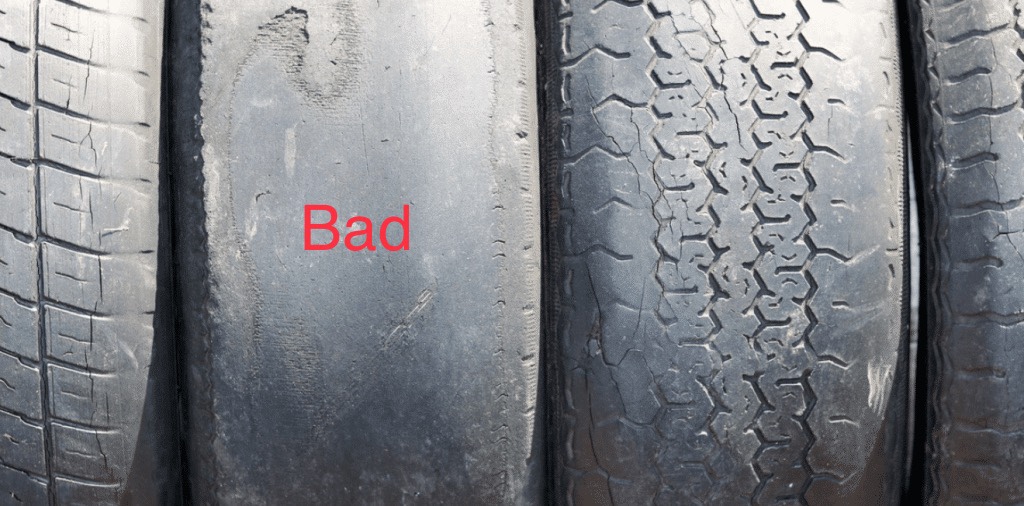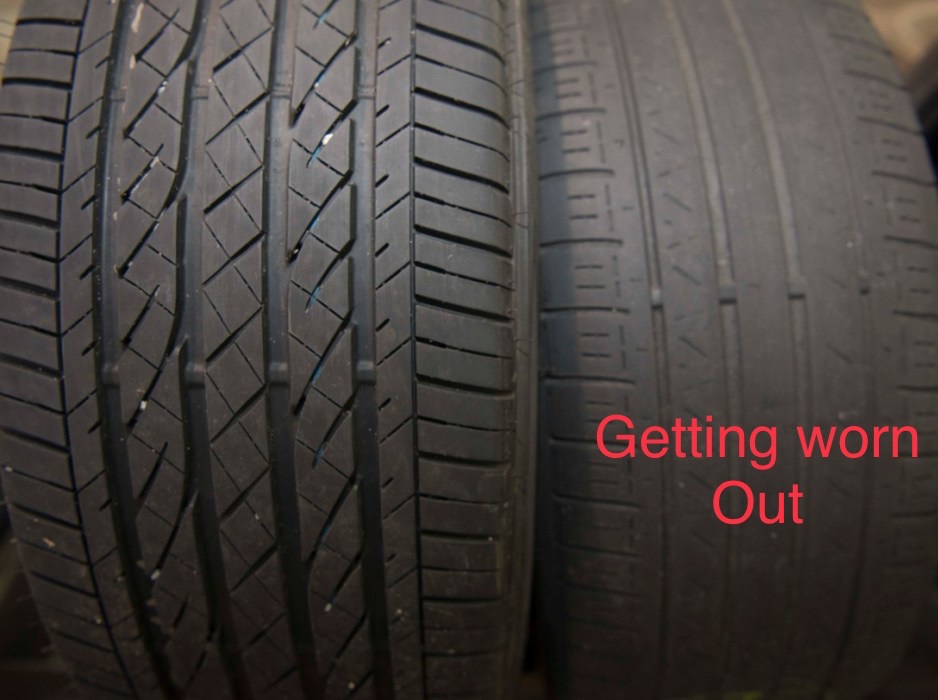If your tires are worn out, you’re not just riding dirty — you’re riding dangerous. No engine upgrade or fancy brakes can make up for bad tires when you need to stop fast, grip wet roads, or avoid an accident. So let’s be real — how to tell if your tires are bad is something every guy should know. And not just for safety, but because it’s one of those basic skills that says, “I’ve got my stuff together.”
If you’re serious about becoming a more capable man, this goes hand-in-hand with how to change your own oil and how to tighten your wheels the right way.

What Are the Signs Your Tires Are Going Bad?
You don’t need to be a mechanic to spot a bad tire. You just need to pay attention and stop pretending that a bald tire is “just fine for a little longer.” Watch for this stuff:
- Cracks or Bulges – If the sidewalls are cracked or bulging out like a busted muscle, that tire’s done.
- Low Tread – Stick a penny in the tread with Lincoln’s head down. If you see the top of his head, it’s time to swap that rubber.
- Uneven Wear – One side’s smooth, the other’s fine? That’s not just a tire issue — it could be a balance or alignment problem too.
- Shaky Driving – If your steering wheel vibrates while cruising, your tire could be out of round or separating inside.
- Visible Wires – If you see steel belts or fabric cords, you’re way past the warning stage. Get off the road. Now.
Every time you ignore these, you’re gambling. And not the good kind of gamble — the kind that leaves you on the shoulder with a blown tire and a bruised ego.
When Should You Actually Replace Tires?
Don’t wait for the rubber to scream for help. A good rule: every 6 years or 60,000 miles, whichever comes first. But here’s the thing — if you’ve been hauling heavy loads, driving on rough terrain, or pulling dad duty on road trips, you’ll probably need them sooner.
Always check:
- Tread depth (the penny test is a must)
- Uneven tread wear
- Sidewall cracks or leaks
And if you’re not sure, go find a shop you trust and have them look at it. A capable man doesn’t just guess when it comes to safety. He handles it.
Are You Taking Care of the Tires You Already Have?
Knowing how to tell if your tires are bad is one thing. But keeping them in good shape? That’s just as important.
Rotate your tires every 5,000–8,000 miles. Keep them inflated — check the pressure monthly. And make sure your wheels are aligned. Bad alignment kills tires fast.
If you haven’t learned this stuff yet, don’t sweat it — just start now. And while you’re at it, make sure you also check out how to spot bad tires for a deeper dive.
Can Weather Damage Your Tires?
Absolutely. Hot summers and freezing winters beat up your tires more than you think. If you park outside, your tires expand and contract all day long. Over time, that leads to dry rot, cracking, and sidewall breakdown.
Guys in colder climates might also see flat spots when their car sits too long. And if you’re driving in snow or ice, worn treads mean zero traction when it matters most. That’s not a risk worth taking — especially if your family’s in the vehicle with you.
So if you live where the weather swings hard, be twice as diligent about checking them. Bad tires in bad weather is a recipe for disaster.

What Happens If You Keep Driving on Bad Tires?
Look — tires don’t magically fix themselves. Ignore them and you’re asking for trouble. Some of the most common outcomes:
- Blowouts at high speeds (this can total your car — or your life)
- Wasted gas from bad alignment and underinflated tires
- Ruined rims and suspension damage
- Longer stopping distances, which could mean the difference between hitting a deer… or a kid crossing the street
And here’s the thing — all of that’s avoidable. Just like how paying attention to odd sounds or changing your oil on timecan keep your car alive, staying ahead of tire issues can save you a ton in repairs and keep your ride safer for everyone.
Should You Ever Buy Used Tires?
It might seem like a good idea to save a few bucks — but used tires are a gamble. You don’t know how they were driven, stored, or if they’ve been patched from a blowout. Even if the tread looks decent, old rubber can hide weak spots inside.
If you’re strapped for cash, sure, it can work in a pinch. But this is one area where “cheap now” often means “pay later.” Try looking into buy now, pay later programs or shop warehouse clubs for deals. Just don’t roll the dice unless you have to.
Want more smart ways to save without cutting corners? Check out these essential skills for men — because knowing how to budget, maintain, and stay ahead is all part of leveling up as a man.
Why This Matters More Than You Think
It’s easy to overlook the small stuff when life’s busy. But this isn’t about tires — it’s about owning your responsibilities. Keeping your car in shape is part of being a dependable man, especially when you’ve got a wife, kids, or even just people counting on you to show up.
Just like learning the basics of car maintenance or how to use the recirculate button properly, checking your tires isn’t optional. It’s one more way you prove you’re serious about handling life like a grown man should.
Final Thought: Are You Ignoring the Warning Signs?
There’s a reason this keyword hits hard — because most guys don’t know how to tell if your tires are bad until it’s too late. Don’t be that guy riding on bald tires, hoping for the best. Be the guy who checks, fixes, and keeps rolling without drama.
That’s what capable men do.
As an Amazon Associate we earn from qualifying purchases through some links in our articles.




